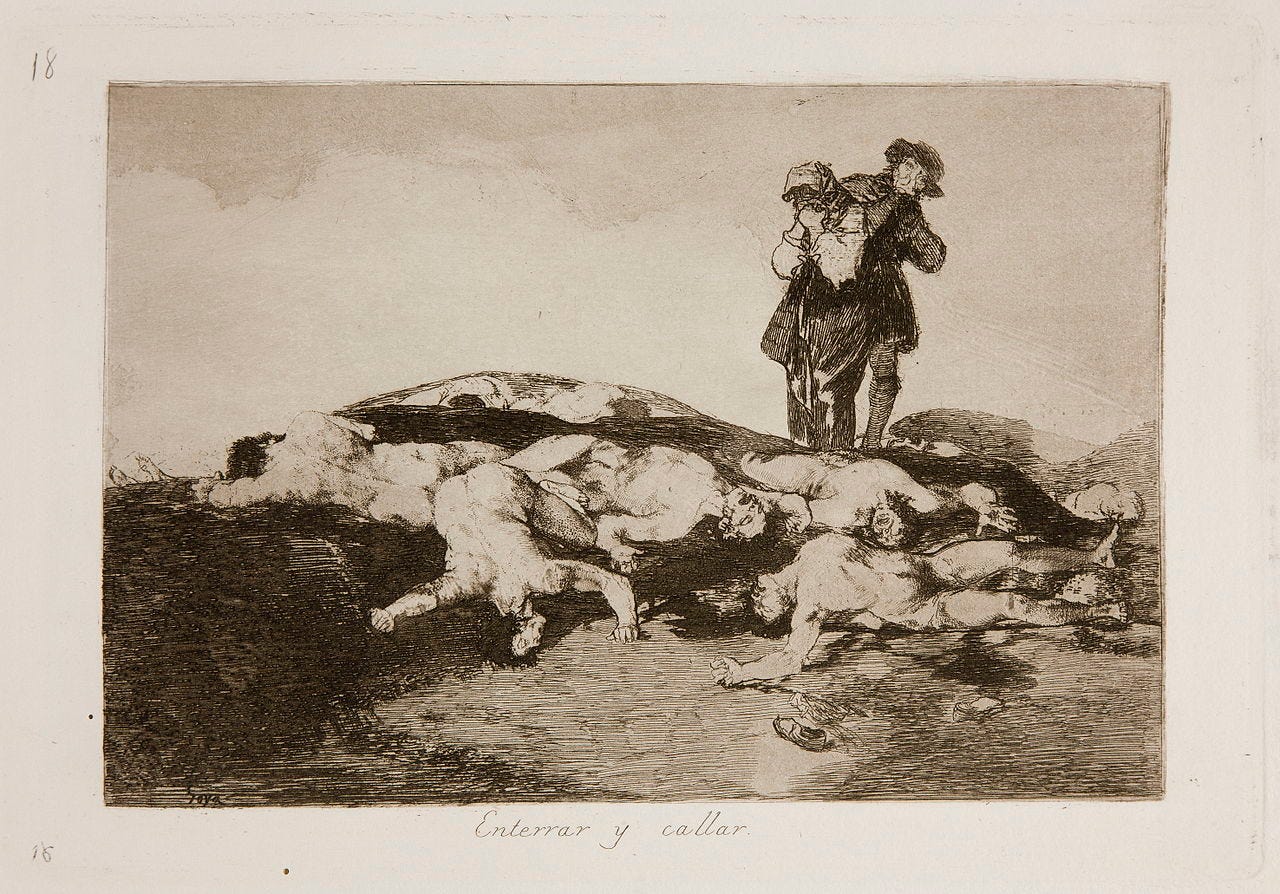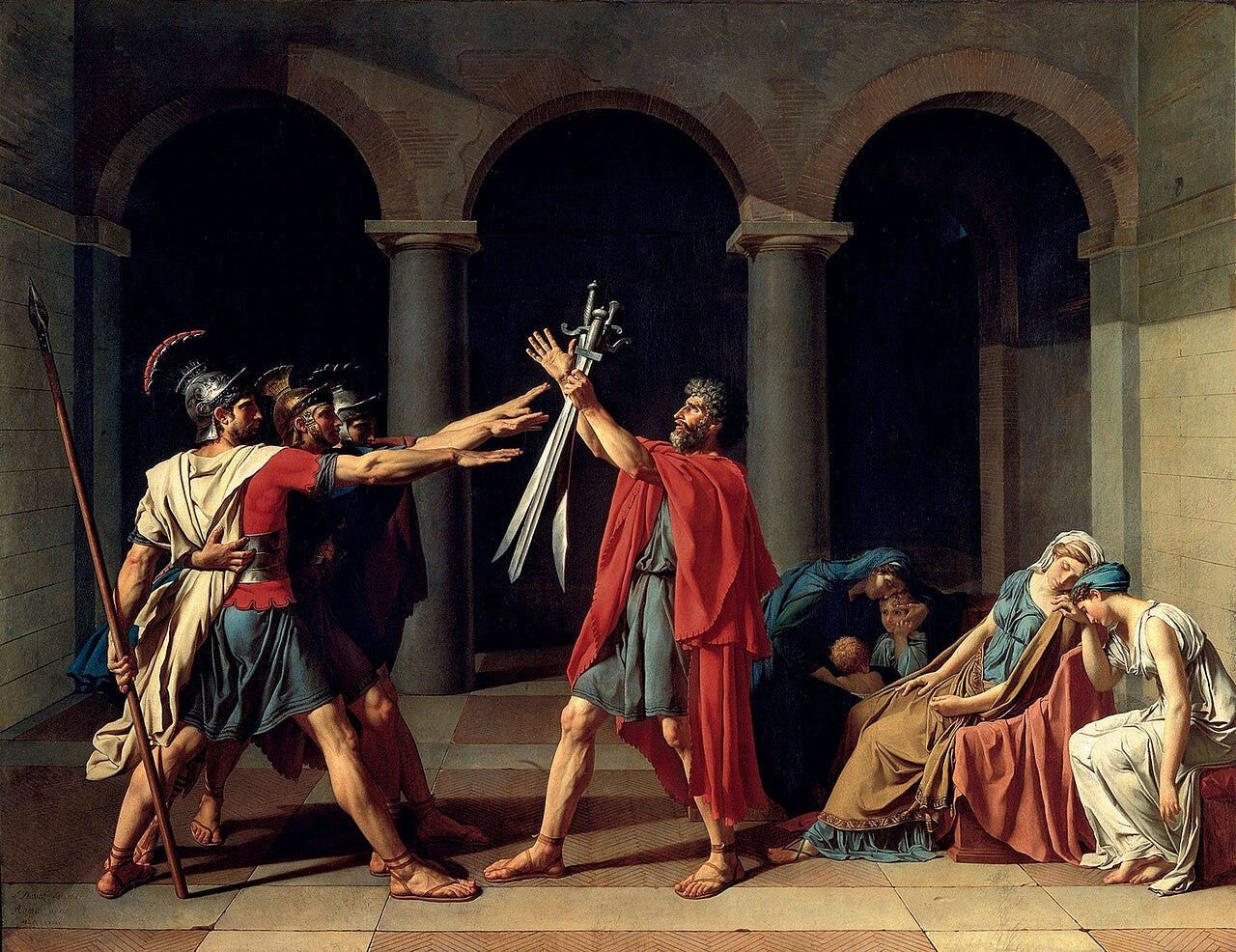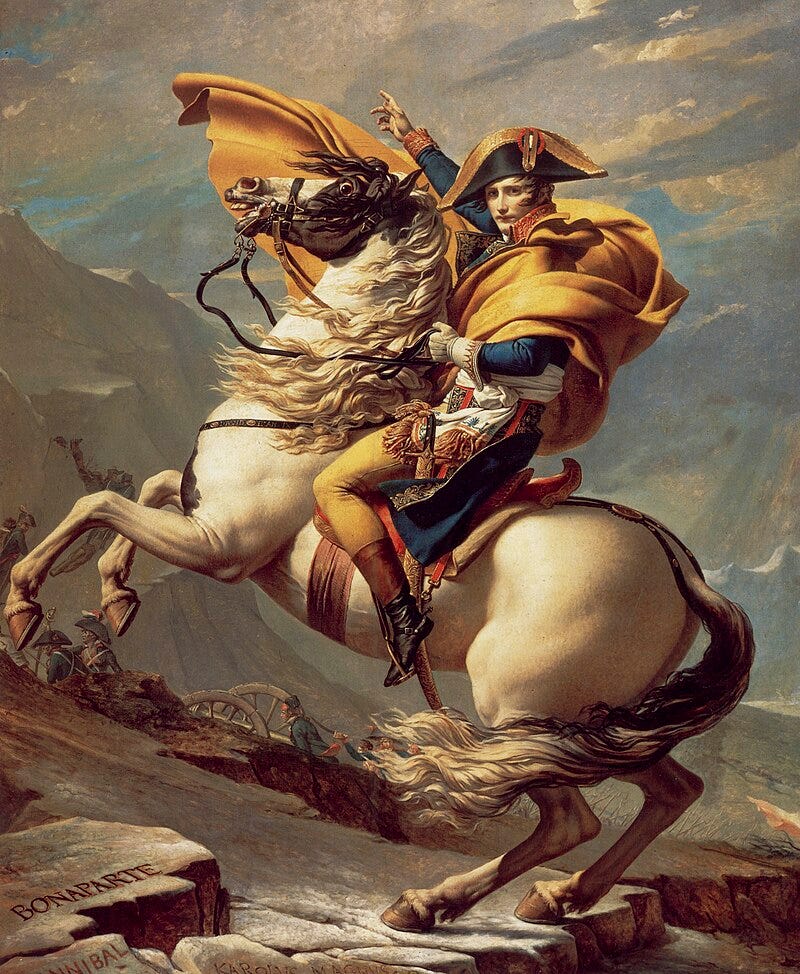Art at the Intersection of Governance and Human Nature
A recent conversation with a (well-read) friend about the role of government had me thinking about the interplay between human nature and social order, especially as depicted in art, philosophy, and political theory. It struck me that our perspectives on human nature play a significant role in shaping our political ideals and selecting the governments we endorse.
This line of thought led me to a series of "what ifs”: What if we lived in a world without governance, where no one dictated our actions, and concepts like taxes and wealth redistribution were absent? How would we navigate our lives? Would we rely solely on instincts and available resources to survive?
In practice, socio-economic realities influence our behaviors, and those behaviors, in turn, shape our modes of expression. Art, in particular, serves as a powerful mirror reflecting not only the artist's worldview but also the dominant ideas of their era. Throughout history, artists have illustrated the complexities of human behavior, especially in times of adversity or in imagined states of nature. In this post, I explore how these themes resonate across artistic expressions and what they reveal about our collective understanding of human nature and governance.
Chaos and Competition in the State of Nature
During the Enlightenment, philosophers and theorists debated various perspectives on human nature. One that particularly resonates with me is Thomas Hobbes’ portrayal of the state of nature in his Leviathan. Here, Hobbes presents a rather grim view of the state of nature: without a strong authority, society spirals into anarchy, where life is “solitary, poor, nasty, brutish, and short.” For Hobbes, governance is crucial to preventing this chaos.
Leviathan by Thomas Hobbes, Engraving by Abraham Bosse (1651)
While Hobbes' view may seem pessimistic, it holds a certain logic. Picture a world where everyone is fighting for survival. In such a scenario, resources are limited, making conflict not just likely but inevitable. Hobbes argues that without societal structures, humans are driven by self-interest, competition, and fear: “During the time men live without a common power to keep them all in awe, they are in that condition which is called war; and such a war as is of every man against every man.” In this environment, trust diminishes, and the instinct to protect oneself trumps cooperation.
This raises a critical question: what would motivate us to collaborate in such a hostile environment? With limited resources, individuals would find themselves in a relentless struggle for survival. As Hobbes suggests, without a central authority to maintain order, society collapses, allowing humanity's instincts to take over. His vision underscores the vital importance of governance and the social contract—an agreement among individuals to form a society that benefits us all.
Note that the practical form of this social contract is a highly contested topic— I leave this to your own intepretation!
Instances of Societal Collapse
If Hobbes is right about the chaos that ensues in the absence of governance, how have artists interpreted this reality? Numerous artists have explored themes of darkness, survival, and the search for order (especially during turbulent times).
Take Francisco Goya (1746-1828), for example. His late 18th century works reflect the chaos of his time. In his series Los Desastres de la Guerra, Goya depicts the atrocities of the Peninsular War, fought between Napoleonic France and occupied Spain between 1808-1814, showcasing graphic scenes of violence and despair. His art illustrates that warfare is synonymous with societal collapse and the failure of social order. Times of war may reveal the validity of Hobbes' views on human nature, demonstrating that when governments fail, chaos inevitably follows.
Selected Etchings from Los Desastres de la Guerra, Fransisco Goya (1810-1820)
Goya’s use of stark contrasts and haunting imagery compels us to grapple with the emotional weight of suffering and loss, reflecting the consequences of a society in disarray, and urging the need for social stability.
The Third of May, 1808, Fransisco Goya (1814)
The Struggle for Survival
Survival is difficult in times of societal collapse. No artist captures this struggle better than Albrecht Dürer (1471-1528). In his engraving The Four Horsemen, the struggle for survival in a chaotic world is vividly illustrated through the symbolism of each horseman and accompanying imagery.
The Four Horsemen, from "The Apocalypse", Albrecht Dürer, (1498)
The first horseman, representing pestilence, conveys the pervasive fear of disease, emphasizing the emotional and psychological impacts of living under the threat of illness. The second horseman wields a sword that represents conflict and violence. His presence evokes the chaos of battle, where survival becomes a desperate fight against both physical threats and the psychological toll of fear. The third horseman, on a black horse and carrying a set of scales, embodies famine, highlighting the dire consequences of scarcity and the struggle for basic necessities. This imagery reflects the imbalance and desperation that arise when resources dwindle, leading to conflict among individuals fighting for survival. Finally, the skeletal figure of Death serves as a stark reminder of mortality, illustrating that no matter the struggle, death ultimately claims all.
The chaotic landscape surrounding the horsemen amplifies this struggle for survival, with cloudy skies and general disarray enhancing the sense of disorder. As societal structures collapse, humanity faces overwhelming threats that challenge its very existence.
Overall, The Four Horsemen serves as an allegory for the human experience in times of crisis, capturing the fears and challenges that define the struggle for survival amid strife and mortality. This struggle can only be eased by establishing some form of social order. Many artists after Dürer have highlighted the importance of order and effective governance, which brings me to my next point.
The Quest for Order
In contrast to the chaos depicted by Goya and Dürer, Jacques-Louis David (1748-1825) illustrates the human longing for order and governance. His neoclassical works echo Hobbesian philosophy, emphasizing the necessity of structure to avert chaos. David’s art reflects a yearning for both civic responsibility and government in maintaining social order.
For instance, in The Oath of the Horatii, David captures brothers preparing to fight for their city - Rome. This scene showcases the nobility of sacrifice for the greater good. The stoic expressions of the brothers convey a powerful sense of duty and solidarity, reinforcing Hobbes’ assertion that individuals must be incentivized to prioritize collective needs over self-interest to prevent anarchy. David’s depiction serves as a rallying cry for civic virtue, illustrating how strong governance is essential for fostering community and stability.
The Oath of the Horatii, Jacques-Louis David (1784-1785)
The need for self-imposed civic virtue is further illustrated in David’s The Death of Socrates. Here, Socrates’ calm acceptance of his fate shows the importance of reason and altruism in maintaining social order. His unwavering commitment to the laws of the state—even at the cost of his life—mirrors Hobbesian thought on the necessity of obeying authority to maintain societal stability and prevent descent into chaos. Through these narratives, David emphasizes the idea that order is not just a societal construct but a moral imperative.
The Death of Socrates, Jacques-Louis David (1787)
Finally, in Napoleon Crossing the Alps, David portrays Napoleon not merely as a military leader but as a symbol of order and stability. This depiction underscores the belief that a strong leader (or an efficient government) is vital for governance, echoing Hobbes' perspective that structure is essential to curb humanity’s baser instincts and maintain social order. David’s art encapsulates the tension between chaos and order, using stark contrasts to highlight the importance of governance in achieving order and lessening the struggle for survival.
Napoleon Crossing the Alps, Jacques-Louis David (1805)
What Does It All Mean?
Imagining a world stripped of reference points, rules, and altruism is unsettling. Hobbes’ philosophy compels us to consider the necessity of some form of governance. Artists throughout history have wrestled with these themes, capturing the stark realities of chaos and the enduring quest for order. Goya, Dürer, and David each, in their own ways, reflect the struggles of survival and the vital need for structure or good governance.These artistic interpretations remind us that while chaos lurks at the edges of society, the pursuit of order and collective responsibility remains crucial.
Ultimately, the interplay between art, governance, and human nature is as relevant today as ever, urging us to consider the delicate balance between our human instincts and the frameworks we build to sustain civilization. Through the lens of history and art, we are reminded of the enduring tension between chaos and order, compelling us to navigate our modern existence with awareness and intentionality.










